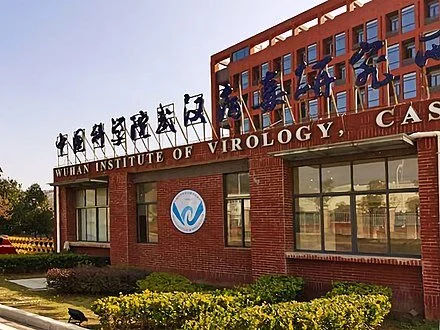David Warsh: Article seems to have prompted Biden to order probe into idea that engineered COVID leaked from lab
Did COVID-19 escape from this complex?
SOMERVILLE, Mass.
There are few better-known brands in public service journalism than the Bulletin of the Atomic Scientists. Founded in 1945 by University of Chicago physicists who helped produce the atom bomb, the organization adopted its famous clock logo two years later, with an original setting of seven minutes to midnight. Since then it has expanded the coverage of its monthly magazine and Web page to include climate change, biotech and other disruptive technologies.
In May, it published “The origin of COVID: Did people or nature open Pandora’s box at Wuhan?,” by veteran science journalist Nicholas Wade. Its appearance apparently prompted President Biden to ask U.S. intelligence agencies to reassess the possibility that a virus genetically engineered to become more dangerous had inadvertently escaped from a partly U.S.-funded laboratory in Wuhan, China, the Wuhan Institute of Virology. So when the Bulletin last week produced publisher Rachel Bronson, editor-in-chief John Mecklin and Wade for a one-hour q&a podcast, I tuned in.
Wade, too, has a substantial reputation. He served for many years as a staff writer and editor for Nature, Science and the science section of The New York Times. He is the author of many books as well, including The Nobel Duel: Two Scientists’ Twenty-one Year Race to Win the World’s Most Coveted Research Prize (1980), Before the Dawn: Recovering the Lost History of Our Ancestors (2006), and The Faith Instinct (2009).
True, Wade took a bruising the last time out, with Troublesome Inheritance: Genes, Race, and Human History (2014), which argued that human races are a biological reality and that recent natural selection has led to genetic difference responsible for disparities in political and economic development around the world. Some 140 senior human-population geneticists around the world signed a letter to The New York Times Book Review complaining that Wade had misinterpreted their work. But the editors of the Bulletin of the Atomic Scientists would have taken that controversy into consideration.
The broadcast was what I expected. Publisher Bronson was proud of the magazine’s consistent attention to issues of lab safety; investigative journalist Wade, pugnacious and gracious by turns; editor-in-chief Mecklin, cautious and even-handed. When they were done, I re-read Wade’s article. I highly recommend it to anyone interested in the details. He is a most lucid writer.
What comes through is connection between the U.S. National Institutes of Health and the Wuhan lab, one of several, in which NIH was funding a dangerous but essentially precautionary vaccine-development enterprise known as “gain-of-function” research (see Wade’s piece for a lucid explanation). Experts have known since the beginning that the virus was not a bioweapon. The only question was how it got loose in the world. What I find lacking in Wade’s account is context.
From the beginning, the Trump, administration sought a Chinese scapegoat to distract from the president’s failure to comprehend the emergency his government was facing. Wade complains that “The political agendas of governments and scientists” had generated “thick clouds of obfuscation that the mainstream media seem helpless to dispel.”
What he fails to recognize is the degree to which the obfuscation may have been deliberate, foam on the runway, designed to prevent an apocalyptic political explosion until vaccines were developed and the contagion contained. In the process, a few whoppers about the likelihood that the virus had evolved by itself in nature were devised by members of the world’s virology establishment. Wade’s generosity in his acknowledgments at the end of his article make it clear there was ample reason to want to know more about the lab-leak explanation long before Biden commissioned a review.
Wade is a journalist of a very high order, but to me he seems tone-deaf to the overtones of his assertions. I was reminded of a conversation that Emerson recorded in his journal in 1841. “I told [William Lloyd] Garrison that I thought he must be a very young man, or his time hang very heavy on his hands, who can afford to think much, and talk much, about the foible of his neighbors, or ‘denounce’ and ‘play the son of thunder,’ as he called it.” Wade, in contrast, likes to quote Francis Bacon: “Truth is the daughter, not of authority, but time.”
But remember too that time, as the saying goes, is God’s way of keeping everything from happening at once. The news Friday that The New York Times has been recognized with the 2020 Pulitzer Prize for Public Service for its coverage of the pandemic was not surprising. There are six months of developments yet to go in 2021, but my hunch is that, when preparations begin for the award next year, a leading nominee will be the Bulletin of the Atomic Scientists.
David Warsh, an economic historian and a veteran columnist, is proprietor of Somerville-based economicprincipals.com, where this column first appeared.
